"Orlan" and others: Soviet projects of cruisers with a nuclear power plant
Project 63
The development of the first Soviet ship with a nuclear power plant began in accordance with the Resolution of the Council of Ministers No. 1601-891, in which it was necessary to create new types of ships with new weapons and new types of power plants in the period from 1956 to 1962. In accordance with this document, almost all enterprises in the industry received their assignments. The Central Design Bureau No.17 (now the Nevskoye Design Bureau) was commissioned to develop a project for a light missile cruiser with the cipher 63. TsKB-16 (in the seventies became part of SPBMB “Malachite”), in turn, had to take up the subject of the anti-aircraft cruiser - the project 81. Both of these projects united a number of features. Approximately equal displacement of the order of 11-13 thousand tons, similar running characteristics and - most importantly - a nuclear power plant.
According to the draft versions, the armament of the new ships should have been as follows. The 63 cruiser of the project was planned to be equipped with P-6 missiles (P-35 modification for submarines) or P-40 in the amount from 18 to 24 units. The option of using the P-20 missiles, developed at that time in the design bureau of S.V. Ilyushin. For self-defense, the cruiser had to carry anti-aircraft missiles of the M-1 complex. The anti-aircraft cruiser, according to the draft design, had a less broad range of missile weapons: it was planned to equip only the M-3. On both ships, artillery mounts of various calibers, anti-aircraft guns, etc. were provided.
By the beginning of the summer of 1957, TsKB-16 and TsKB-17 had prepared preliminary designs for the new cruisers and submitted them for consideration to the naval command fleet. An interesting fact is that by this time there was not even a conceptual design of a nuclear power plant for new ships. The reasons for this are not entirely clear, but the opinion is often expressed that the Navy command and nuclear designers preferred to first determine the requirements for such a nuclear power plant and only then begin its development in order to fit into the finished ship design. Based on the results of the consideration of two projects, the senior management of the fleet decided to close the project 81. According to the admirals, including the commander in chief of the Navy S. Gorshkova, the construction of individual ships intended only for air defense formations, was not advisable. In the future, this idea was not returned and all new ships were equipped with their own anti-aircraft systems. A part of the developments under project 81 was used in project 63.
In the middle of the 1957 of the year, in accordance with the requirements of the draft design of the cruiser "63", the development of the reactor and related equipment began at the Research Institute-8 (now NIKIET named after NA Dollezhal). The exact parameters of this project have not yet become public knowledge, but from some sources it is known that at maximum power the nuclear power unit could provide the new cruiser with the speed to 32 nodes.
As of the beginning of 1957, it was planned to hand over to the fleet the leading cruiser built at the Leningrad Plant No.189 (now the Baltic Shipyard) in the 61 year. The next three years were devoted to the construction of a series of seven cruisers. In the middle of 1958, all the project documentation went to the State Committee on Shipbuilding under the Council of Ministers. As a result of the consideration of the submitted papers, as well as some related issues, the officials decided to terminate the project. The main reason for this was the unavailability of industry and design organizations. The fact is that by the time the documentation was submitted, a whole set of systems important for the ship existed only in the form of projects that were in the early stages of development. The completion of the creation of missile systems, nuclear power plants and a number of other systems required a lot of time, which was not. In some sources it is mentioned that the 63 project looked like a certain scheme, on which places for a particular unit were indicated. Naturally, the completion of such a project would take a lot of time, effort and money. In the spring of 1959, all work on the 63 project ceased.
Start of the 1144 project
Simultaneously with the 63 project, the 61 project was created. He meant the development of a ship with a gas turbine power plant, designed to combat enemy submarines. By the second half of the fifties, it became clear that it was the American nuclear-powered submarines with strategic missiles onboard that posed the greatest danger to the Soviet Union. Therefore, work was launched on the creation of a layered anti-submarine defense system. In the near and middle zone, the 61 patrol ships were to search for and destroy enemy submarines. It is worth noting that shortly after the start of serial construction — approximately in the mid-sixties — these ships changed their class. In view of the technical characteristics and tactical niche, they were transferred from the guard to the newly formed category of large anti-submarine ships (BOD).
The future large anti-submarine ships of the 61 project at the end of the fifties looked interesting and promising. However, with all their advantages, they also had disadvantages. First of all, this is the cruising range. On economical modes of operation of the engine, one fueling was enough for 2700-3000 miles. At the same time, the supply of provisions for the crew of more than 260 people provided only a trip of ten days. Thus, the 61 patrol / BOD project could not act at a great distance from their native shores, which significantly reduced their combat potential. In this regard, the idea to modernize the ships of the 61 project appeared, having installed a nuclear power plant on them. After such an improvement, it would be possible to conduct patrols at a great distance from the bases, and in addition, to remain at sea for a long time.
The new project received the 1144 index and the Orlan cipher. It is worth noting, at that time he had practically nothing to do with his current state. In just a few years, the project not only received a lot of technical adjustments, but even changed its class. In the early sixties, the 1144 project was a patrol ship, somewhat like the 61 project, but equipped with NPIs. As a result of analyzing the threats and capabilities, it was decided to equip it with anti-submarine-guided weapons, as well as with an anti-aircraft missile system. Anti-ship missiles were not provided for, since such weapons no longer fit into the size and displacement parameters set by the technical specifications. The fact is that at that time the concept dominated that large warships no longer have prospects. Therefore, the recommended displacement value of the Orlans was at the level of 8-9 thousand tons.
However, the new ship could not remain protected only by anti-aircraft missiles and weapons. Required to ensure the safety and means of attack. To this end, shortly after the start of the 1144 project, the 1165 Fu-A project was launched. This cruiser was supposed to carry guided missiles to attack enemy surface targets. Initially, they were going to equip the P-120 “Malachite” or P-500 “Basalt” missiles, however, in the course of further design, they were abandoned for a number of reasons. Ultimately, the main armament of "mines" were to be the new missiles P-700 "Granit". Thus, in order to search and destroy enemy submarines, two ships had to go out to sea. One of them (BNC project 1144) was aimed at the detection and destruction of submarines, and the second (cruiser project 1165) - its protection against enemy ships.
By the mid-sixties, there was a tendency to increase the displacement of both ships. It was quite difficult to meet the prescribed eight to nine thousand tons, therefore, TsKB-53 (now the Northern Design Bureau) took advantage of the very first opportunity that arose and began to increase the combat potential of ships at the cost of increasing displacement. This opportunity was the next version of the technical specification, in which the required displacement was not indicated. After that, the size of the ships slowly but surely began to change in a big way. It is worth noting that a special nuclear power plant for both projects until a certain time existed only in the form of a project at a very early stage. Due to this, all changes in the appearance of the BOD and the cruiser did not adversely affect the course of its development.
By the end of the sixties story with projects 1144 and 1165 took more than an interesting look. Formed by this time the appearance of the ships spoke not only about the good combat potential of the compound from the BOD and the cruiser. The unreasonably high price of such an approach was clearly visible. To ensure full-fledged combat work, it was necessary to build two ships at once, and this, under certain circumstances, could turn into too large expenditures. As a result, the 165 “Fugas” project was closed, and it was decided to install all of its anti-ship component on the Orlan after appropriate modifications. So the former patrol, and then the large anti-submarine ship, became an atomic missile cruiser capable of performing all the tasks arising before ships of this class.
It is worth noting, often the approach to creating projects 1144 and 1165 is subjected to harsh criticism. First of all, the objects of the “attack” are the specific views of the fleet command and the country's leadership on the appearance of promising warships, namely, restrictions on displacement, the desire to ensure maximum capabilities with minimum dimensions, etc. In addition, there are complaints about the formation of the appearance of the ship simultaneously with its development, which clearly did not benefit the economic part of the program.
"New" project 1144
And yet, despite the existing problems, the result was a competent and viable concept of a nuclear missile cruiser, designed to solve several problems. At the same time, for the creation of such a ship it was required to invest a lot of effort and time. Orlan had every chance of becoming the first domestic project of a surface combat ship with nuclear power plants, but it needed serious study.
Disputes designers, military and industrialists covered almost all topics. For example, at the insistence of the commander in chief of the Navy S.G. Gorshkov, on the cruiser provided for a backup power plant with two boilers. Of course, against the backdrop of foreign ships, it looked ambiguous, but in the end we chose functionality and vitality, and not prestige. The reactors themselves did not cause big questions. The nuclear power plants for the cruiser were decided to be made on the basis of the systems used on the new nuclear-powered icebreakers. Thanks to this, we managed to save a lot of time.
Where big disputes went around weapons. Constantly there were proposals to remove the shock or anti-submarine function from the 1144 project. Already after the start of the construction of the head nuclear cruiser, a proposal was made to complete it in the form of a missile cruiser armed only with anti-ship and anti-aircraft missiles (1293 project), and “take out” all anti-submarine weapons to the new nuclear BOD “1199”. In the end, the composition of the Orlan’s weapons underwent certain changes, and both new projects gradually faded into shadow and ceased to exist.
During the final development of the 1144 project, previous work continued on enhancing ship security. Back in the fifties, booking ships was considered ineffective against modern means of destruction, but the Orlan, however, should have received additional protection. It was proposed to place booking modules around the cellars with rocket ammunition and reactors. This proposal still raises questions. Such protection could cover the ship’s aggregates only from missiles with high-explosive fragmentation warheads, which by that time were gradually leaving the arsenals of the leading countries, giving way to penetrating ones. It is worth noting that warships abroad are still equipped with such protection, although in the case of American aircraft carriers of the Nimitz type, blocks from Kevlar are used.
In the spring of 1973, the construction of the lead ship of the 189 project, named Kirov, began at plant No. 1144 in Leningrad. As a result of all disputes around the requirements and nuances of appearance, it began to look like this. With a length of 250, a width of 28 and a draft of 10 meters, the ship has a standard displacement of 23750 tons or full in 25860. It is equipped with two bypass water-cooled reactors KN-3 with a thermal capacity of 170 MW. Second-circuit steam is supplied to steam turbines with a total capacity of 70 ths horsepower. To save progress in case of problems with the nuclear power unit, Kirov is equipped with two automated boilers KVG-2. If necessary, they can supply steam to steam turbine installations, so that the ship is able to maintain speed.
The main armament of the cruiser "Kirov" steel anti-ship missiles P-700 "Granit". 20 launchers are placed below deck, in front of the superstructure. With the help of these missiles it is possible to defeat surface targets at a distance of up to 550 kilometers. In addition to anti-submarine missiles, the lead ship received Osa-M and C-300F anti-aircraft systems, as well as several types of artillery mounts: two AK-100 (automatic gun 100 mm) and eight six-barrel AK-630 assault rifles. To fight the enemy submarines, the Kirov was equipped with RBU-6000 jet bombs, five 533-mm torpedo tubes and the Metel anti-submarine missile system.
Later on, the 1144 project underwent some changes, as a result of which the 1144.2 project appeared. In accordance with it, three more nuclear cruisers were built: Frunze (now Admiral Lazarev), Kalinin (now Admiral Nakhimov) and Yuri Andropov (laid as Kuibyshev, now Peter the Great) . All built ships differ from each other in some elements of construction and equipment, but the most noticeable differences are noticeable in armament. For example, all cruisers of the 1144.2 project do not have a separate launcher for anti-submarine missiles and therefore must launch the Waterfall ammunition through torpedo tubes. On the lead ship there were two AK-100 gun mounts, but on the following ships one AK-130 with two 130 caliber guns was mounted. The third and fourth ships of the series instead of the bomb-bomb RBU-6000 and anti-aircraft guns AK-630 equipped with a RBU-12000 and rocket-artillery complexes "Kortik", respectively. Finally, Peter the Great is different from its predecessors by the presence of the Dagger anti-aircraft complex instead of the Osa-M.
The head nuclear missile cruiser of the 1144 project became part of the navy on the eve of the new 1981. The next two ships are October 31 1984 and December 30 1988. The fourth cruiser, laid in the mid-eighties, was launched back in 1989 year. However, subsequent events in the life of the country led not only to the renaming of the ship. Due to the difficult economic situation, the cruiser “Peter the Great”, who managed to be “Kuibyshev” and “Yuri Andropov”, joined the fleet only in 1998 year. During this time, the most unpleasant events occurred with the rest of the Orlans. The need for constant repairs, coupled with the lack of appropriate capabilities, led to the fact that Kirov in 1990 was sent to the reserve in the year, and Admiral Lazarev and Admiral Nakhimov in the late nineties went to sludge. It was planned to repair and upgrade these ships, but after more than ten years the necessary work did not begin. Recently, information has emerged on the elaboration of the issue of restoring and updating the Kirov and Admiral Lazarev ships. Work will begin in the coming years. Thus, only one heavy nuclear cruiser of the 1144 project: “Peter the Great” remains in the ranks.
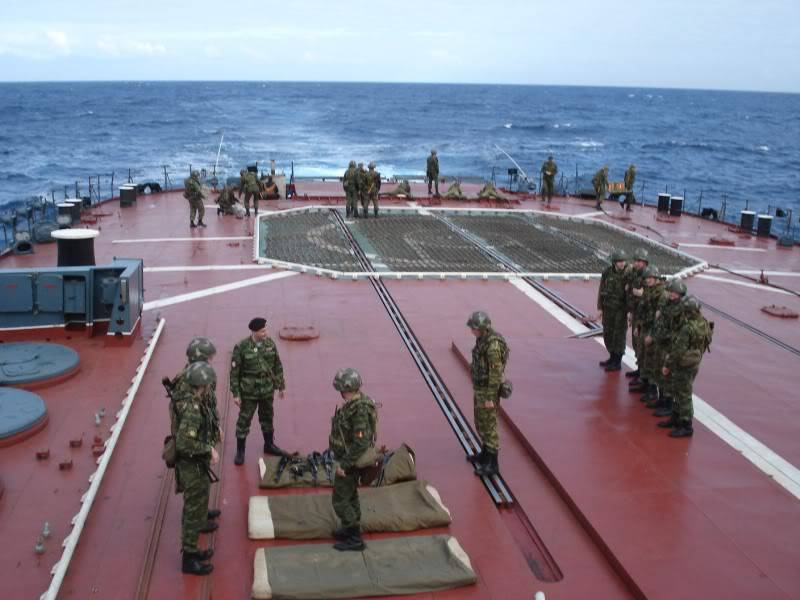
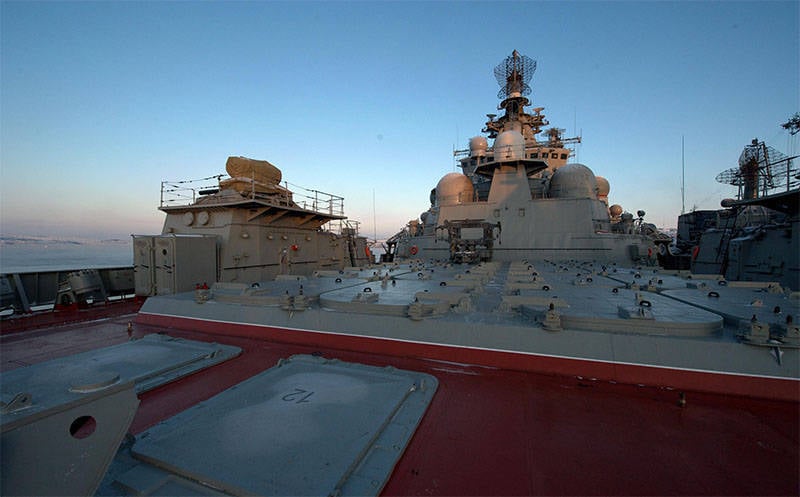
Reactor and aircraft
A heavy ship with anti-ship and anti-submarine missiles equipped with a nuclear power plant is certainly good. But in the conditions of the last decades, the presence of only such ships is small. For example, the naval doctrine of the United States for many years based on the use of carrier strike groups (AUG). As part of such a compound there are one or two aircraft carriers, several cruisers and cover destroyers, as well as auxiliary vessels. Due to this composition, AUG can solve a wide range of tasks using a variety of weapons. The core of the AUG - aircraft carriers - clearly showed their effectiveness during the Second World War, and during the Vietnam War only proved their capabilities.
In the Soviet Union, the creation of aircraft carriers began quite late. The development of full-fledged aircraft carriers began only in the fifties (53 project), which accordingly affected the overall appearance of the navy. However, over the next years, domestic designers created several aircraft carrier projects. Among them were ships with nuclear power plants: the 1160 / 1153 “Eagle” and 1143.7 “Krechet” projects.
Research on the creation of an aircraft carrier with nuclear power plants began in Nevsky PKB back in 1969 year. The possibility of building a modern ship capable of transporting and supporting the operation of airplanes and helicopters was considered. In the case of a successful completion, it was planned to build a series of three such ships, designated as “1160” and the cipher “Eagle”. In the course of the preliminary work, eight design options were considered at once with various layout options, different power plants, etc. In addition, all options had different dimensions and displacement: the latter ranged from 40 to 100 thousand tons.
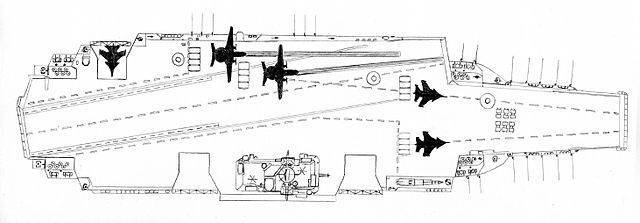
In accordance with the finished advance project, the new aircraft carriers were to have a displacement of about 80 thousand tons and were equipped with four reactors. On board the ship could accommodate up to 60-70 aircraft and helicopters. A variety of wing wing configuration options were considered. At first it was proposed to arm the Eagles with specially modified MiG-23A and Su-24 aircraft, as well as Ka-25 helicopters. After 1973, the composition aviation groups adjusted. Now, a dozen Su-27K and Su-28K (one of the early designations for the Su-27 strike modification), as well as reconnaissance aircraft and anti-submarine helicopters, were to be based on board. In addition, it was envisaged to equip ships with P-700 Granite rocket launchers.
The fleet command considered the 1160 project, but noted in it a number of characteristic points that could hinder further operation. In this regard, in 1976, the development of its updated version with the index “1153” began. In accordance with the new task, the aircraft-carrying cruiser should have been a little less (displacement up to 70 thousand tons) and carry fewer aircraft — no more than fifty. Defensive armament remained the same, as did the PKR Granit. Under the flight deck it was envisaged from 20 to 24 launchers for the latter. By the time the design of the updated “Eagle” was completed, a proposal appeared to use not only the previously proposed aircraft, but also the Su-25K attack aircraft.
It is worth noting an interesting feature of both versions of the "Eagle". They envisioned the use of steam catapults: four in the “1160” variant and two in the “1153”. The ability to use these units was due to the presence of a nuclear power unit capable of producing the required amount of steam. In the case of other types of power plants, the presence of a steam catapult caused a lot of questions and problems. At the same time, the catapult, in comparison with the springboard, made it possible to launch a larger range of aircraft from an aircraft carrier.
However, such a technical solution could not have a beneficial effect on the fate of the entire project. In the 1977 year, at the insistence of the Ministry of Defense, the 1153 project was closed. According to the original plans, the head "Eagle" was to be commissioned by the Navy in 1981. However, as a result of the comparison, the fleet command chose the 1143 "Krechet" project as the main path for the development of domestic aircraft carriers. On the basis of the very first project, 1143 created several new ones that have reached the construction stage of ships.
Atomic "Ulyanovsk"
The latest project on the basis of "Krechet" was «1143.7». It was a radical processing of the available technical and conceptual solutions, the purpose of which was to create a ship with a significantly increased combat potential. In a number of possibilities, the new ship would not be inferior to the American “Nimitz” class “superravianos”.
The development of the 1143.7 project began in 1984 year using developments from previous projects of the 1143 family, as well as the old 1160. However, the new aircraft-carrying cruiser, according to the final design, was much larger and heavier than the previous ones. With a total length of 323 meters and a maximum width of the flight deck in the 78, its standard displacement should have been at least 60 kt, and the total displacement should be about 80 kt. For comparison, the maximum displacement of the ship “Admiral of the Fleet of the Soviet Union Kuznetsov” (project 1143.5) is only 61 thousand tons.
The huge ship was to be equipped with an appropriate power plant. In the cruiser holds, four KN-3-43 reactors with a thermal capacity of up to 305 MW each with steam-turbine installations and turbo-gear units were installed. Maximum power on the shafts: 4x70000 hp This power, according to calculations, was enough for maximum speed in 30 nodes.
When designing the flight deck of a new aircraft-carrying cruiser with an area of about 150 thousand square meters. meters designers went to a kind of compromise: it was equipped with a springboard, and two steam catapults "Mayak". In addition, there were aerofinisher units. Under the flight deck on the new ship was supposed to be a hangar for aviation equipment of size 175 x 32 x 8 meters. To lift the aircraft on the deck there were three freight elevators. Inside the hangar and on the flight deck could fit up to 70 aircraft: on 25-27 Su-33 or MiG-29K fighters, as well as X-NUMX-15 Ka-20 and Ka-27 helicopters. Also, the Yak-31 vertical take-off fighter and the Yak-1143.7 long-range radar detection aircraft were created for basing on the 141 project ship.
In addition to aviation, the new aircraft-carrying cruiser had to be equipped with systems for self-defense and attack of enemy targets. These are 12 (according to other data, 16) launchers of Granit missiles, the Kinzhal anti-aircraft missile system with ammunition up to 192 missiles, eight Kortik missile-artillery systems with ammunition to 48 thousand shells and 256 missiles, eight anti-aircraft missiles AK-630 machines, and two RBU-12000 jet bomb bombs. Thus, the existing tendency to equip ships was clearly visible in the 1143.7 armament: a wide range of anti-aircraft weapons and a pair of anti-submarine and anti-ship armaments.
In 1988, at the Black Sea Shipyard (Nikolaev), a groundbreaking ceremony was held for a new aircraft carrier, named Ulyanovsk. According to the plans of this time, in 1992-93, the ship was to be launched, and in 1995, he could have joined the fleet. However, the collapse of the Soviet Union and the events that preceded it led to a severe slowdown in construction, and then to its complete cessation. At the beginning of 1992, the leadership of an already independent Ukraine decided to divide the constructed structures into metal. According to a number of sources, the ship was ready for 18-20%. In the early eighties, the command of the USSR Navy and the leadership of the shipbuilding industry were going to build a series of four cruisers of the 1143.7 project, but these plans did not even come true by a quarter.
***
As a result of the extremely unfortunate and disastrous events of the eighties and nineties, the Soviet and Russian navy received only four surface ships with nuclear power plants. At the same time, up to the present, only one of them has survived in the fleet's operational structure - the nuclear-powered heavy cruiser Peter the Great. But nuclear power units turned out to be much more popular in the submarine fleet.
It is worth noting that the use of atomic reactors on surface ships still causes controversy from time to time. With all its advantages, such power plants are not without drawbacks. Thus, the relative fuel savings are more than offset by the cost of the nuclear power plant itself and the fuel assemblies for it. In addition, a relatively small reactor requires a lot of complex and expensive protection systems, which seriously affects the overall dimensions of the entire power plant. Gas turbine and diesel systems are not so demanding on the level of training of staff, as nuclear. Finally, if a nuclear power unit is damaged, it can inflict fatal damage on a ship, and in some circumstances, destroy it, which specifically affects survivability in combat conditions.
Probably, the combination of all these factors was the reason that in recent years the number of new warships with nuclear reactors in the world has decreased significantly. Almost all new surface ships are built with diesel or gas turbine power plants. NPSs are mainly used in submarines. In this case, their use is fully justified, since it allows you to limit the duration of patrols, including those underwater, only to a supply of provisions. Therefore, nuclear submarines, of course, have a great future. As for the surface combat ships with similar power plants, their prospects do not look as obvious. Therefore, the Orlan project missile cruisers may well remain the only representatives of their class in the Russian Navy in the near and distant future.
On the materials of the sites:
http://zakaz800.ru/
http://atrinaflot.narod.ru/
http://navycollection.narod.ru/
http://globalsecurity.org/
http://militaryrussia.ru/blog/topic-360.html
http://militaryrussia.ru/blog/topic-359.html
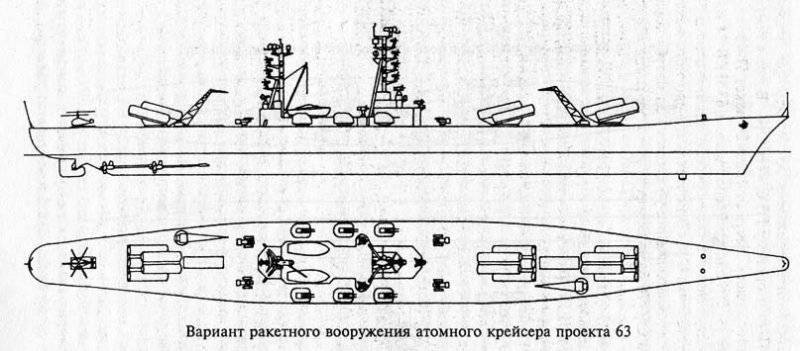
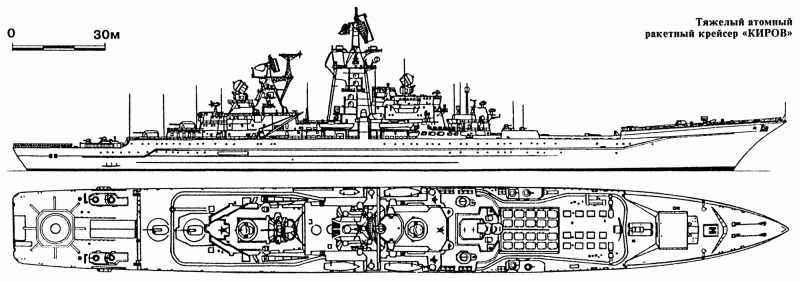
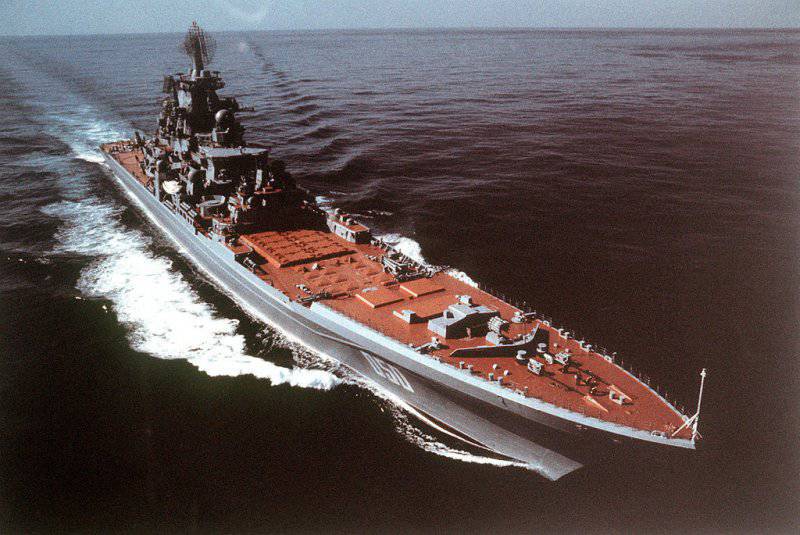
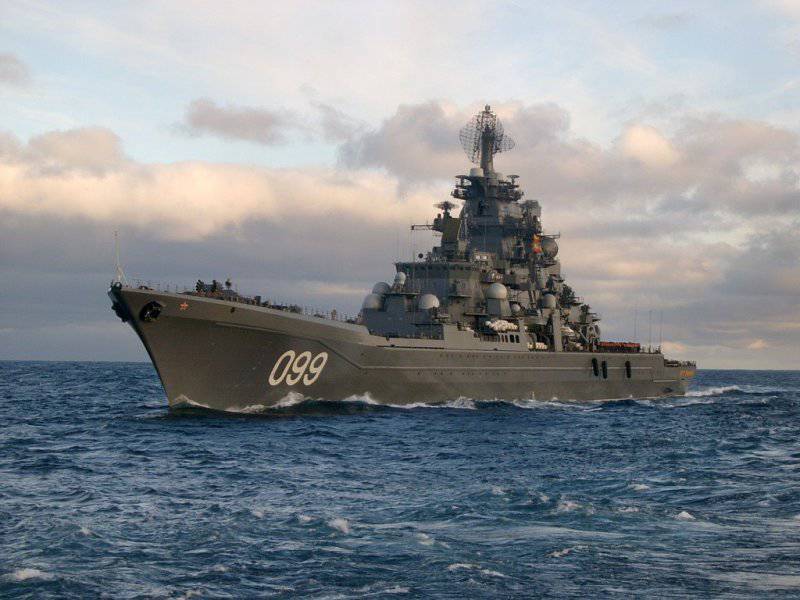
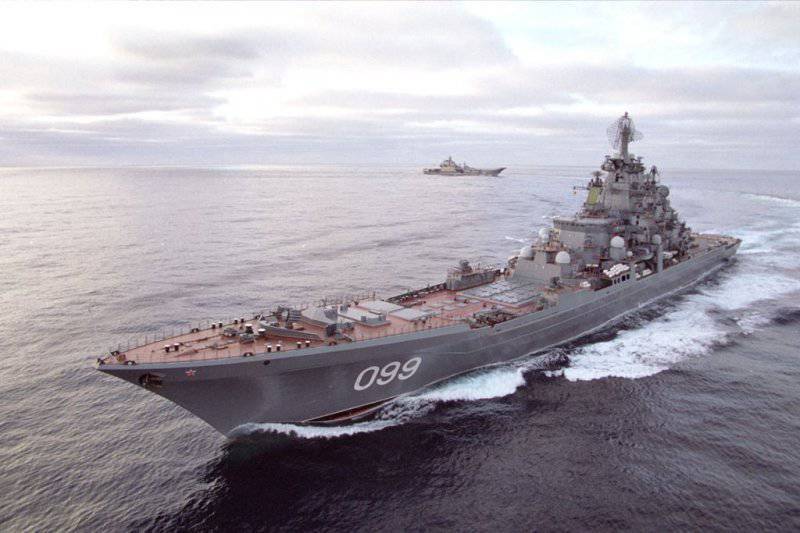
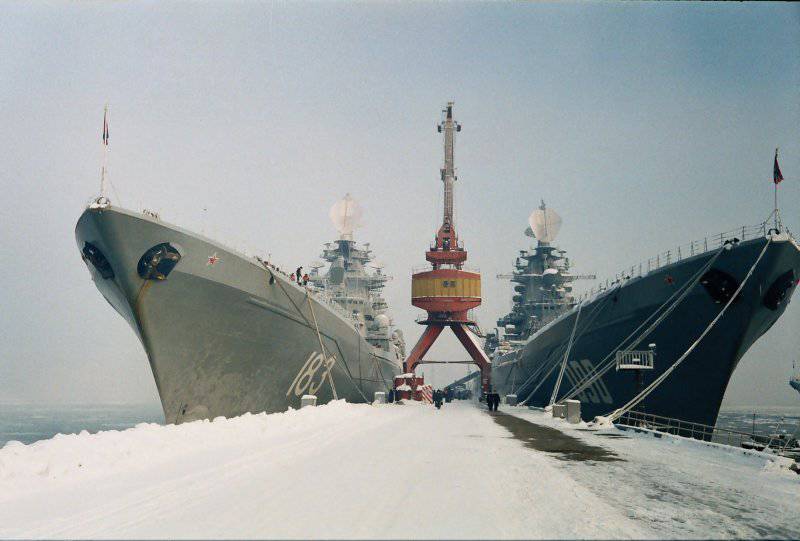
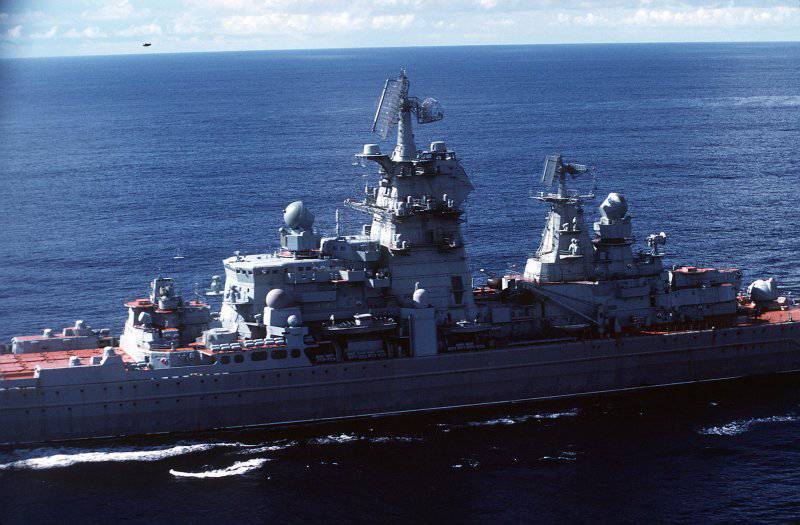
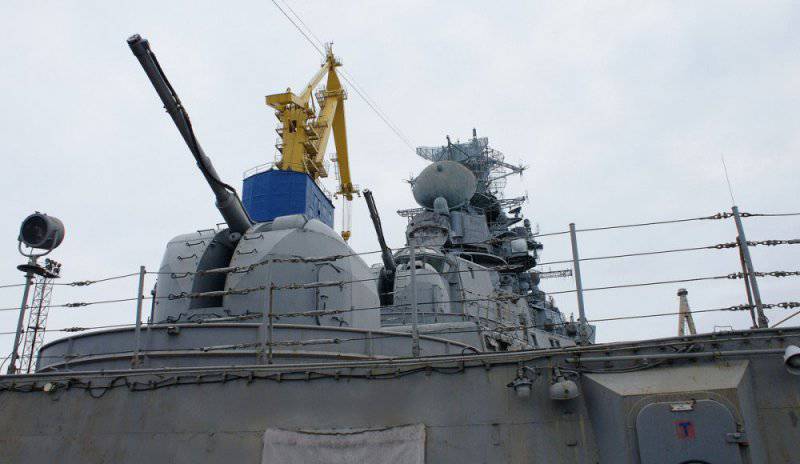
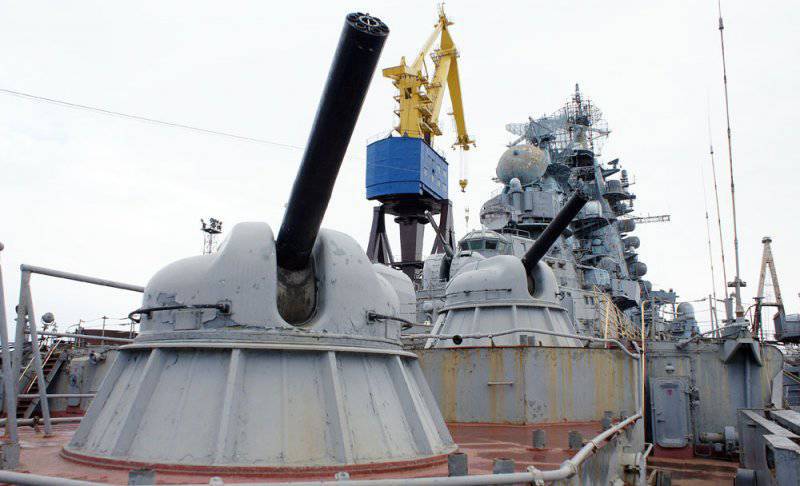
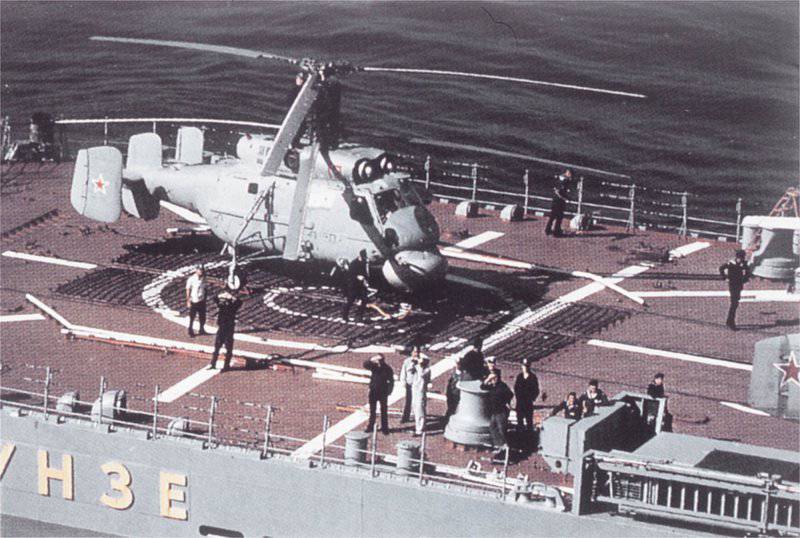
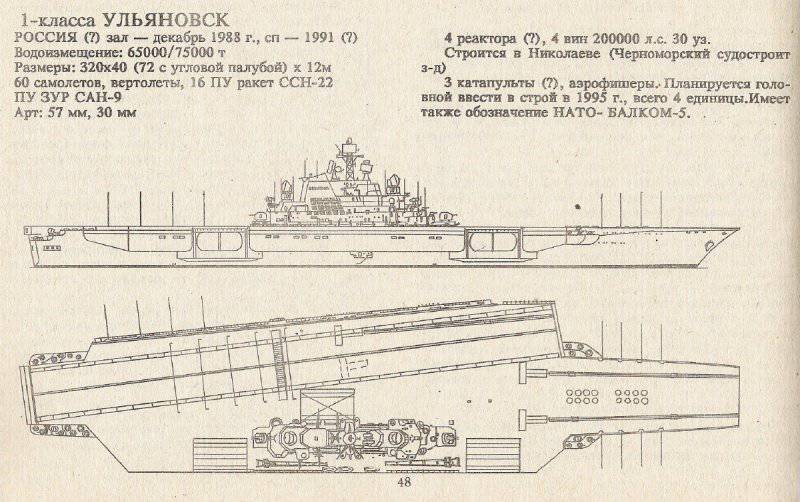
Information